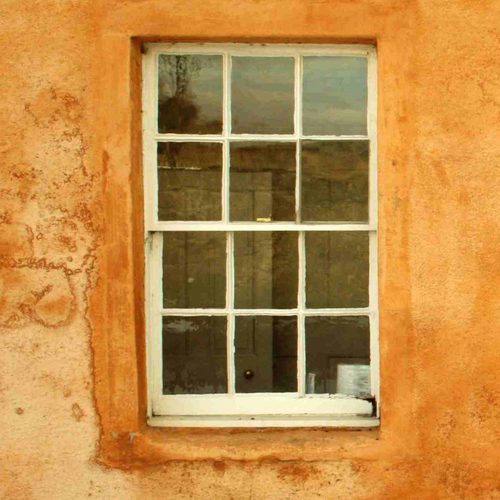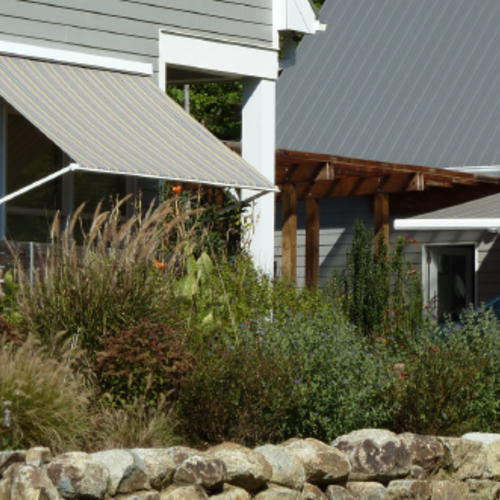
Todd Spraggins is grappling with a question that many owners of historic homes have faced: If the original windows are in poor condition, should they be restored, upgraded with better glass, or completely replaced?
In Spraggins’s case, the originals are painted shut and have broken weights, and he plans a variety of energy upgrades for the house. “So,” he writes in this recent Q&A post, “I’m debating replacing windows completely (or sash replacements) or doing my own repairs and upgrades.”
If he replaces the windows, he expects to have trouble matching a detail on the existing sash called a sash horn. That’s a small flourish on the stiles of the upper sash. Spraggins has been unable to track down a U.S. manufacturer that makes a window with this detail.
“My other option is to do weatherstripping, install a spring-based chain, and replace glass with a good insulated-glass unit,” he adds. “My problem is I have no clue where to get really good IGUs in small quantity.”
New, restored, or somehow modified? That’s the starting point for this Q&A Spotlight.
Keep the old windows
To Greg Smith, it’s an open-and-shut case.
“Personally I wouldn’t consider window replacement in a 1901 Victorian,” he writes. “I would be firmly on the side of restoration in your situation (assuming they are original). Also, I would avoid replacing the glass in the original windows as much as possible.”
Smith thinks that replacing the single-pane glass in vintage windows is “rarely a good idea and often way more trouble than it’s worth.”
Instead, he suggests Spraggins consider storm windows rather than insulated glass units. “Performance-wise, adding dual-panel low-e storm windows to your refurbished originals would give you better energy performance results than substituting IGUs for…
Weekly Newsletter
Get building science and energy efficiency advice, plus special offers, in your inbox.

This article is only available to GBA Prime Members
Sign up for a free trial and get instant access to this article as well as GBA’s complete library of premium articles and construction details.
Start Free TrialAlready a member? Log in














7 Comments
No one addressed the issue of sash weight pockets on either side of old windows, which are problematic from both insulation and air sealing perspective. For advocates of keeping old windows, what are the best suggestions for dealing with sash pockets?
If you must save the old windows and are looking for an energy upgrade. Convert them into single hungs. Fix the top sash, remove the top sash weights / chains, etc. Fill that void with rigid foam cut to allow perimeter fill with canned spray foam. Bottom sash is still operable. And of course a storm window to cover from the outside.
I have had good success with sash replacement kits when the old windows were so far gone that repairing them was not worth the effort. New vinyl balances and sashes can be installed in existing frames as long as they are solid and square. This can be very cost competitive with window repair and adding storm windows and has the added benefit of easier ventilation than storm windows.
Hey all, great post. Even as a window manufacturer rep I must say those old windows are not something you're going to get "duplicated" without a hefty budget. As @stolzberg points out, depending on how much you want to replicate your existing detail, you might be able to do away with the weight pockets altogether, order a two-wide mulled unit and increase the width of your glazing. That'll obviously change the aesthetics some but might benefit the space by being brighter. If you need to maintain the exact look then most certainly repair/restore what you have to the best of your ability. You won't find a new product off the shelf that comes close.
Sorry for the plug but Sierra Pacific (and several other production manufacturers) have what is called a sash lug, or as Ben called it an Ogee lug. It's pretty unique to New England and one doesn't have to venture too far away before their window person will look at them blankly not knowing what they're after but they are available. They will usually require the window to become a single hung rather than double. They are traditionally a wood window element but many manufacturers have run dies to extrude them in aluminum now.
For my money, I would replace the entire window or none of it. Sash replacement kits could possibly work but if you're upgrading the windows you might as well address the entire opening and take care of any air infiltration, wood rot and/or other general wear and tear. How any new window connects to your sheathing layer is critical or you don't really have a new window.
Marvin offers sash lugs on both single and double hung, both all-wood and aluminum-clad, and both new-construction and insert windows in their Signature Ultimate line.
I would replace the windows, no question. Not only do you get the energy conservation, but they will also reduce noise and air pollution. I replaced 1920's single pane wood windows that had lovely upper grills with something very similar in fiberglass. They were more expensive than vinyl, but they offered the exterior lite grills in the same style as the originals. I've also replaced metal and wood single pane windows with vinyl, and thought they looked great. Not a big fan of the grills between the panes of glass because it looks fake and they usually can't replicate the exact look of old windows, so if vinyl is my only option, I'd leave the grills out. I just had wood single pane windows replaced in a 1900's house in Eastern Oregon and noticed that the contractor installed them so that about 1/4" of the window frame protrudes from the exterior of the window casing. This may be how newer windows move water around and down the side of the window, but it has negative impact on the aesthetic of the building. Now the windows are flat with the facade where they used to sit inside the casing and provided some dimension. Since I need more windows, I'm going to have the contractor reinstall the windows back in their original spot.
I would not under any condition replace the windows! The wood windows are an integral part of the historic fabric of the house and an essential part of its appearance and value. There are specialists in many places that can restore them. The old-growth wood is highly rot resistant, and even if they outwardly appear in shabby condition, it is likely that they can be restored. You can buy or make historically accurate removable wood storm windows if you want extra insulation. You can also reduce leakage by adding interlocking weatherstripping if you want to (our windows have interlocking metal weatherstripping, possibly installed new in 1903, and there is no draft felt). You can also replace the sash weights with Pullman spring balances to eliminate the weight pocket, although the clanging of the weights is part of the charm! Energy efficiency is extremely important, but it doesn't have to be perfect at the expense of everything else. I cringe every time I pass an old house with plastic windows.
BTW, a correction in a post above: Ogee lugs are not an East Coast thing -- in Portland Oregon, most of the housing stock is from 1890 to 1920, and Ogee lugs are found on virtually all of the original wood windows.
Log in or become a member to post a comment.
Sign up Log in